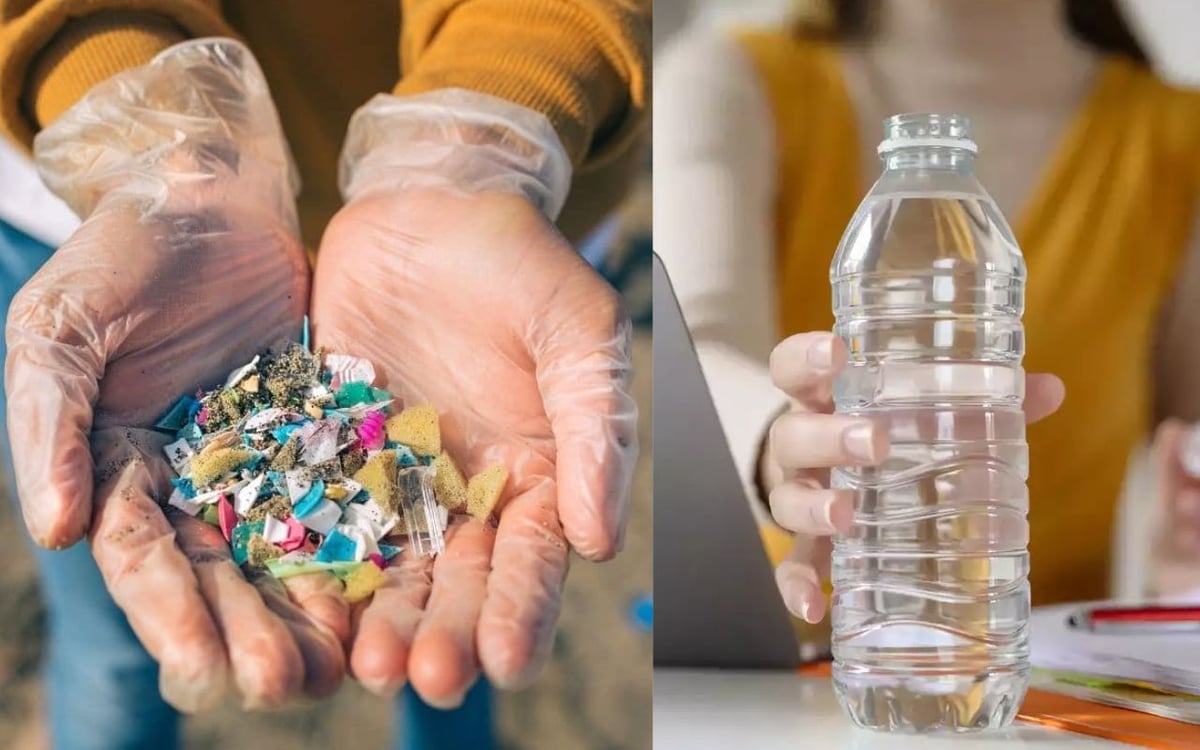In modern lifestyle, we all are trying to make our lives happy. Be it the question of material comforts and resources, food or clothing, we do not hesitate in getting the best as per our capacity or in spending on food and drink, but for a long time, microplastics have been a problem in food items. The increasing presence has become a cause for concern. Now the situation is such that these plastic particles are being found not only in rivers and oceans but also in the snow frozen on the high peaks of the mountains.
These microplastics are also present in drinking water. Many studies have shown that the bottled water which we consider to be the safest, has become deadly these days. These small particles of plastic present in this water, which we know as microplastics, are not safe for us. Due to this, the risk of heart disease, diabetes and other dangerous diseases has increased. Research by scientists at Columbia University has revealed that microplastic particles are present even in bottled water. This has surprised scientists all over the world. Research has proved that on an average 2,40,000 particles of microplastic are present in one liter of bottled water. Different bottles of bottled water contained 1,10,000 to 3,70,000 particles per liter, of which 90 percent were nano plastic particles, while the rest were microplastics. It should be noted that a piece smaller than five millimeters is called microplastic, whereas nano plastic is called one micro meter i.e. one billionth of a meter. These particles are so small that they can enter the human digestive system and lungs and affect all parts of the body including the brain and heart. The big concern is that they can pass through the placenta and affect the unborn child. These can range from gastric problems to physical abnormalities, such as disability. It is noteworthy that these particles are produced from different types of plastics, which are harmful for health. It is dangerous that humans are either eating or inhaling 10 thousand pieces of microplastic in a year. The truth is that we are drinking poison, not water in the form of bottled water, which is slowly making our organs useless.
Due to lack of resources, fossil fuels are often used in making plastics, which are responsible for the emission of harmful pollutants into the environment such as greenhouse gases and particulate matter etc. In the process of filling water in plastic bottles, 2.5 million tonnes of carbon dioxide is emitted into the atmosphere every year. The waste from disposable water bottles then flows into the ocean and causes the death of 9.1 million marine creatures annually. The entire process of bottled water has approximately 2,400 times the impact on ecosystems and costs 3,500 times more. As far as plastic is concerned, about 2.7 million tons of plastic is used every year in the world to bottle water. Transporting that bottled water to market results in carbon dioxide emissions and air pollution, which contributes to global warming. Burning plastic bottles releases toxic substances like chlorine gas and heavy metals into the air. While bottled water affects the environment, human health, etc., its bottles destroy our water reserves and groundwater sources. Besides this, it also has a bad impact on the local economy. If we want to save health and environment, then we should drink tap water instead of bottled water. Tap water should be stored in glass or stainless steel containers. Avoid using things packed in plastic, because babies and young children face the most danger due to plastic particles. With this, the total number of years of life lost can be reduced by 36 percent.
Researcher Katherine Tone says that considering both the environment and health, it comes to the conclusion that bottled water produces wider impacts than tap water. Importantly, we need to do our own due diligence on this issue and before purchasing a packaged water bottle, we should also check the establishments that claim to have health and safety standards. Regarding this, environmentalist Dr. Anubha Pundhir, leader of Uttarakhand’s anti-plastic campaign, says that this problem cannot be solved only through government decisions or at the government level. We also have to be alert at the consumer level.
(These are the personal views of the author.)

